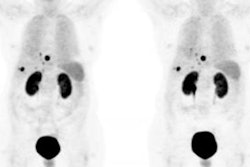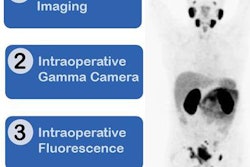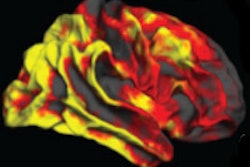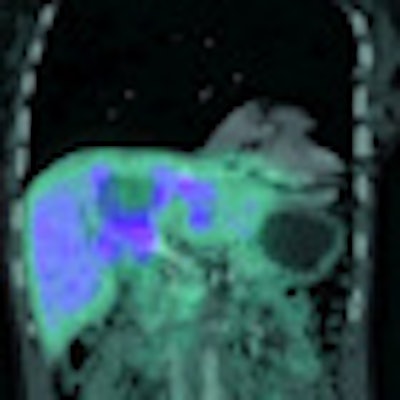
MIAMI BEACH, FL - German researchers have received this year's Image of the Year award at the Society of Nuclear Medicine (SNM) annual meeting for their research illustrating the effectiveness of a new radiopharmaceutical for treating digestive tumors.
Called bismuth-213 (Bi-213) DOTATOC, the radiopharmaceutical when used to treat gastroenteropancreatic neuroendocrine tumors (GEP-NETs) proved to be more effective than other therapeutic agents. Sometimes patients have developed resistance to more conventional radiopharmaceuticals.
"The images illustrating the effectiveness of Bi-213 DOTATOC for GEP-NETs show the remarkable results that can be achieved in a clinical setting," said Dr. Peter Herscovitch, chair of SNM's Scientific Program Committee, in announcing the award. "This opens up a new door for those patients whose GEP-NETs do not respond to more standard radiotherapy."
The lead author of the study is Alfred Morgenstern, PhD, project leader of the Alpha-Immunotherapy Project at the European Commission's Joint Research Centre. The image was selected from more than 2,000 studies presented over the course of the four-day conference.
GEP-NETs are rare, slow-growing tumors that develop in the digestive system, can spread throughout the body, and often resist standard chemotherapy. There are about 1,000 new cases of pancreatic neuroendocrine tumors per year in the U.S., according to the U.S. National Cancer Institute.
In this study, Bi-213 DOTATOC was synthesized using a microwave-assisted labeling protocol. A total of 21 patients who previously had shown resistance to treatment with the radioactive isotope yttrium-90 or lutetium-177 DOTATOC were treated with escalating doses of Bi-213 DOTATOC therapy. Doses ranged from 1 to 10 GBq up to 21 GBq.
The researchers then assessed response with gallium-68 DOTATOC PET/CT, contrast-enhanced sonography, MRI, digital subtraction angiography, and tumor markers. In addition, markers were monitored for hematologic, kidney, and endocrine toxicity during and after treatment.
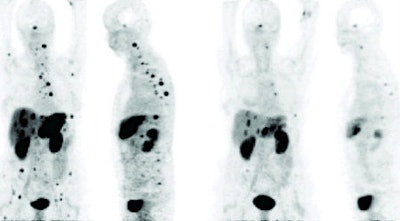 |
| Response to Bi-123 DOTANOC treatment observed in patients with tumors resistant to previous therapy with yttrium-90 and lutetium-177. Image above shows shrinkage of liver lesions and bone metastases after therapy with 11 GBq of Bi-123 DOTANOC. Image below shows response of multiple liver lesions after therapy with 14 GBq of Bi-123 DOTANOC. Images courtesy of SNM. |
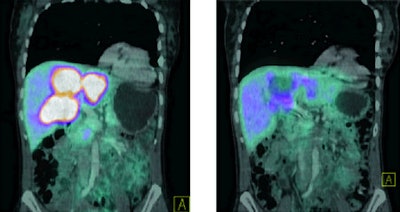 |
Morgenstern and colleagues found that the labeling protocol for Bi-213 DOTATOC provided reliable doses of the treatment at a clinical level. In addition, patients tolerated the increasing doses well, and there was no acute kidney, endocrine, or hematologic toxicity.
Most importantly, the researchers observed shrinkage of the primary tumors, as well as liver and bone metastases.





